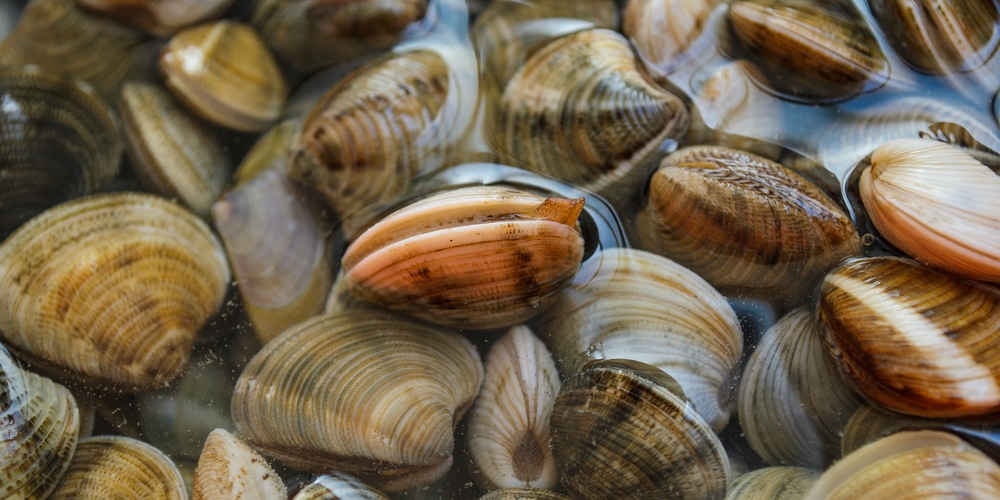You’ve likely heard about the benefits of composting and have perhaps even created your own compost heap. If you enjoy eating shellfish, you may be wondering whether or not clamshells can be composted. This article will answer the question, ‘Are clam shells compostable?’
There are many benefits to making your own compost at home. Having a compost heap can help save you money, help the environment and provide soil that’s rich and beneficial for your yard. You’ll also be able to dispose of food scraps quickly and easily on your compost heap, rather than having smelly household waste hanging around.
Quick Answer: Yes, clam shells are compostable
Composting clamshells
Home-made compost can be spread on your lawn to help provide a natural fertilizer for your yard. This is particularly beneficial if you’re growing your own vegetables. Compost piles contain nitrogen, carbon, oxygen, and water which rots down. Make sure that you don’t use too much water, as that can make your compost moldy.
There are many things that you can compost, including food scraps and garden cuttings. Some people even add seaweed or manure to their compost to help feed plants. If you enjoy eating seafood, you can even compost your clamshells. Clams are excellent as they help reduce the acidity of the soil and balance the pH of your compost.
While it is possible to compost clamshells, you’ll need to prepare the shells to incorporate them into your compost correctly. Follow these simple steps when adding clamshells to your compost:
1. Clean and crush the clamshells
Before adding clamshells to your compost, you’ll need to clean the shells thoroughly. Wash the shells and then lay them on a towel outside on a hard surface. Put a dishtowel over the top of the shells and crush them using a large rock or another heavy object. Crush the clamshells into gravel and then sweep them into a bucket.
2. Layering
The crushed clam shells can then be added to your compost heap in layers. First, put organic matter such as dry leaves, hay, twigs, or coffee grounds that contain carbon content into your compost bin. It’s best to create a six-inch layer. Then add a layer of nitrogen by putting grass clippings and food scraps, including vegetable and fruit skins or manure, in the compost bin at about four inches thick.
In fact, coffee grounds make a great fertilizer for orchids, and many other plants.
3. Add manure and soil
Next, add a layer of crushed clamshells and cover with a two-inch layer of manure and soil. Continue to build up your compost pile with carbon content, nitrogen, clamshells, and a manure and soil mix. The manure and soil should be mixed in equal parts.
4. Water your compost heap
It would help if you watered your compost heap twice weekly to keep it moist and encourage the organic matter to rot down. Ensure your compost is damp but don’t let it get too saturated. Water is vital to the composting process, but overwatering can cause problems.
To test whether your compost heap has had enough water, you can pick up a fistful of the compost and give it a squeeze. If you can’t get any water drops out of the compost, this is a sign that it’s too dry. You want to see a couple of water drops when you squeeze the compost.
You may also like: How Often to Water New Sod
5. Mix daily
You can also mix your compost heap daily. Use a pitchfork and mix at least every two days. This will help to encourage air circulation and will help the organic matter in your compost rot down.
6.Leave for three months
After adding clamshells to your compost, you’ll need to leave it for about three months. The compost will go through a process where it will rot down and be beneficial for soil health. You can then spread the compost over your vegetable patch and mix it with the topsoil. This will fertilize the plants and improve the pH of the soil. You can also try putting some compost around your trees to feed them. Compost is an excellent organic fertilizer and is particularly beneficial for fruit trees.
Conclusion
Clam shells are compostable as long as your grind them first. Don’t put whole clam shells into your compost as they won’t biodegrade. By following the above steps and adding clamshells to your compost, you can improve the pH of your soil and fertilize your plants naturally. Clamshells are beneficial to your plants as they can help to reduce the acidity of the earth.
